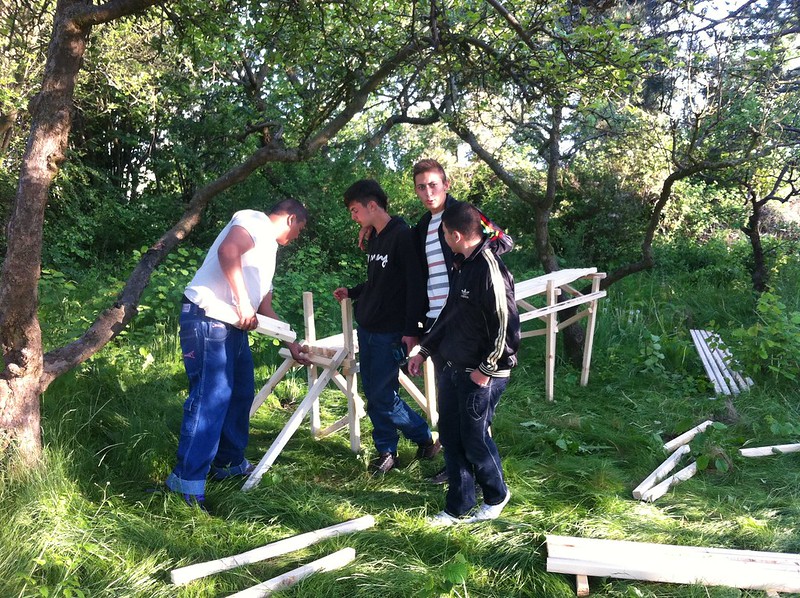
The second phase starts with a public meeting where the map shows often conflicting interests or different views on the same place. This is our way of making the dialogue more constructive – to make people know about other peoples views and disagreeing in a civilised way.

We work out the important issues of the community and start seeing some patterns of possibilities. The dialogue and further stories are also taken to the streets in curated walks. People are free to join in and it usually leads to new stories.

A second public meeting is set in a place central to the local community – here it is a garden that used to belong to a old factory. We opened the garden for experiments before the meeting – inviting people to come with their ideas. Being, building and discussing it in the actual space makes the discussion about space more concrete.

For the actual meeting people would discuss new ideas and form networks around these – Or just build something themselves – for themselves.

Out of this second public meeting evolves a number of new localised networks and ideas.














